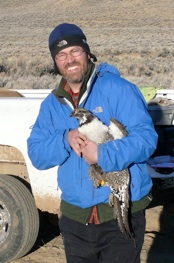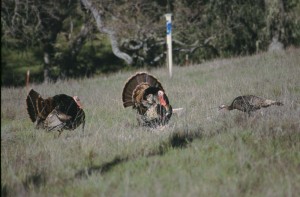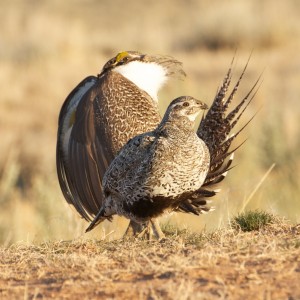You can see my full CV on the tab above, or Krakauer_CV_20170811.
I am broadly interested in behavioral and evolutionary questions, particularly related to the mechanistic, developmental, ecological, and evolutionary factors that shape complex social systems. Most of my work involves birds, particularly game-birds (order: Galliformes).
For an overview of my interests, continue reading. Details of two of my research systems are here, with additional descriptions of some of the broader questions I am interested in below:
Greater Sage-grouse (Postdoctoral Research)
Cooperation and Conflict in Animal Mating Systems
Individuals face both costs and benefits in social groups; these costs and benefits may not be shared equally among all members. My dissertation research focused on male-male cooperative coalitions of wild turkeys (Meleagris gallopavo). This species is a textbook example of kin selection, with one male in a small team monopolizing reproduction. I used microsatellite genotypes to measure relatedness and reproductive success, and found that helpers were not only close relatives (probably a mix of brothers and half-brothers), but also gained more indirect fitness benefits than they would have if they had left to breed on their own.
More broadly, I am interested in models of reproductive sharing within groups, as well as the various strategies and tactics individuals use within complex social systems. As an example, I am examining the role of intraspecific brood parasitism in nestmate relatedness, and how this affects subsequent reproductive options and kin recognition mechanisms of male offspring.
Sexual Selection- from individual tactics to population metrics
Many of the captivating examples of elaboration in nature, such as intricate songs or brightly colored feathers, are thought to arise via inter- or intra-sexual competition. While studies linking traits to reproductive success are a critical step in understanding sexual selection, this classical approach may underestimate the importance of sexual selection.
The opportunity for selection approach uses the variance in reproductive success to assess the potential for sexual selection to act, without any assumptions about which traits might be under selection. This provides several useful features, such as comparing the potential strength in males and females, or, with care, across populations. I used this technique to show that both mating success and sperm competition are important determinants of overall reproductive success for males.
Additionally, my postdoctoral work uses lekking sage-grouse (Centrocercus urophasianus) as a model to understand the importance of display plasticity in sexual selection. We have conducted experiments using a realistic robotic female grouse to show that successful males adjust more to changes in the courtship environment, and that, unlike unsuccessful males, they do not appear to face a trade-off between display quantity and quality. Current and future work in this system is examining the relationship between social and environmental responsiveness, using economic bargaining to understand inter- and intrasexual interactions during courtship, and using orientation and aiming to understand both skills and constraints on adaptive variation in courtship.
Acoustic Communication and Sound Production
Many animals communicate using sound, and recent advances in recording technology and acoustic analysis are providing researchers with powerful new ways to study animal behavior. I helped develop a multi-channel microphone array as part of a study of sage-grouse lekking behavior. This exciting new tool has allowed us to record multiple males simultaneously in a complex social environment to measure vocal behavior and it’s importance for male success on the lek. Our advances led us to the discovery of unknown complexity in vocal sound production; we are currently expanding this line of inquiry to understand how sound production mechanisms have evolved in grouse and other game-birds. We are also trying to understand the structure and function of mechanical sounds (i.e. stridulations) produced by the males during courtship.



